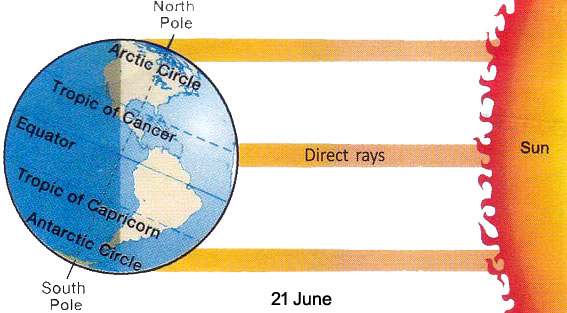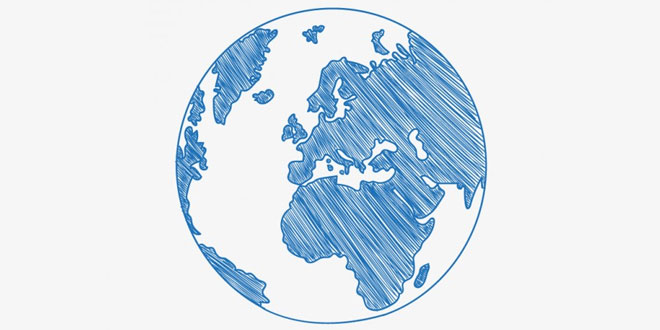Question: How are days and nights caused?
Due to the spherical shape of the earth, only one of it gets light from the sun at a time and the other half remains in darkness.
Question: Explain the phenomenon of the seasons with the help of a diagram.
Answer: (i) Summer solstice (21 June):
- The north pole is inclined towards the sun, while the south pole is turned away from the sun.
- The sun rays fall vertically fall over the tropic of Cancer (23 1/2°)
- The large portion of the northern hemisphere gets heat and light from the sun.
- Days are longer than night in the northern hemisphere.
- The place in the northern hemisphere experience summer summer season.
- The longest day and the shortest night occur on 21st June in northern hemisphere.
- All the above conditions are reversed in the southern hemisphere.

(ii) Winter solstice (22nd December):
- The south pole is inclined towards the sun, while the north pole is turned away from the sun.
- The rays of the sun fall vertically over the tropic of the Capricorn (23 1/2° S).
- The large portion of southern hemisphere receives heat and light from the sun.
- Days are longer than night is the southerns hemisphere.
- Places in the southern hemisphere experiences summer.
- The longest day and shortest night occurs on 22nd December in the southern hemisphere.
- All the above conditions are reversed in the northern hemisphere.

(iii) Spring and Autumnal Equinoxes (21 march and 23 September):
- On 21 March and 23 September, the rays of the sun fall vertically on the equator.
- The North Pole and the South Pole lie at an equal distance from the sun.
- Days and night are equal duration throughout the world.
- It is neither very hot nor very cold in the earth the hemispheres.
- The Northern Hemisphere experiences spring season from 21 March and autumn season from 23 September. It is reverse in the Southern Hemisphere.
- The equinoxes coincide with time of sunrise at one pole and the time of sunset at the other pole.
- 21 March coincides with the New Year Day of the Indian National Calendar.

 Class Notes NCERT Solutions for CBSE Students
Class Notes NCERT Solutions for CBSE Students


